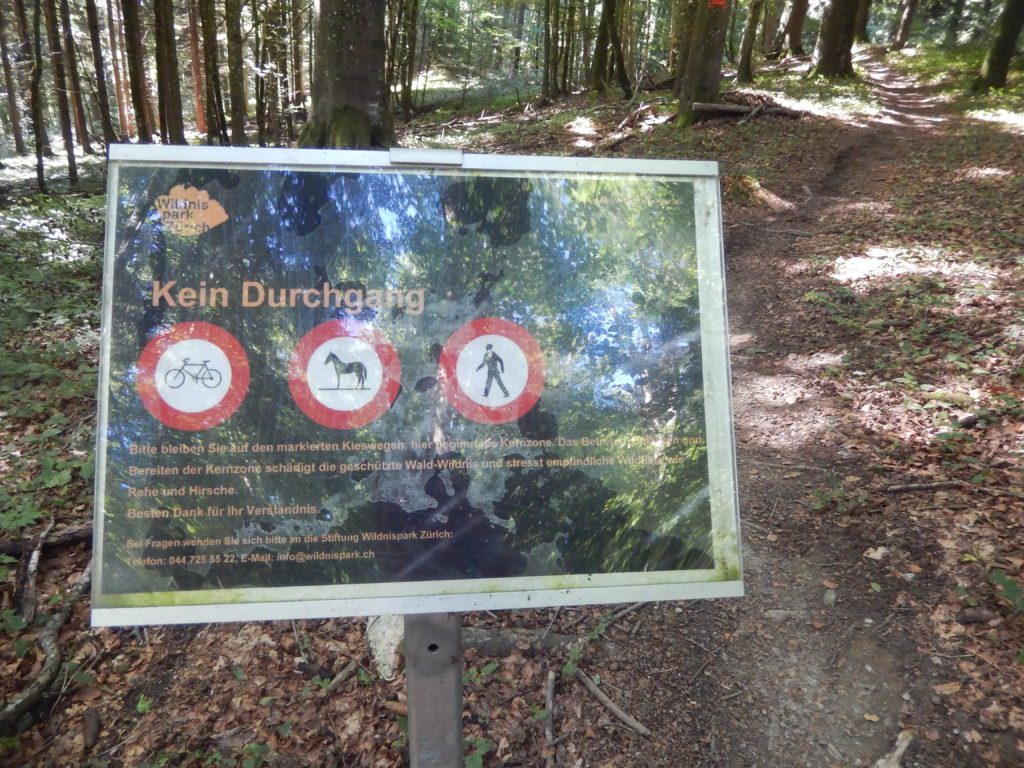Visitor behaviour & connection to nature: a study tour in European Protected Areas
Photo by Bryony Slaymaker
Visitor behaviour and best practice visitor services in European protected areas
Article issued by Bryony Slaymaker
Every year, the Alfred Toepfer Natural Heritage Scholarship (ATS) supports the work of young conservationist in protected areas across Europe. Bryony was one of the winners of the Scholarship in 2016.
Does connection to nature lead to pro-environmental behaviour?
The objective of the study was to explore visitor services in European protected areas and methods of visitor behaviour management for the purposes of nature conservation. Additionally, a visitor survey explored the connection to nature and attitudes to pro-environmental behaviour amongst visitors to protected areas.
I visited six protected areas across Estonia, Finland, Germany and Switzerland, in addition to my local site (and place of work) in England, during the busy summer period, spending time with frontline staff and meeting visitors.
During the study tours, I had the privilege of exploring several protected areas located close to urban centres, spending time with staff, visitors, junior rangers and school groups learning about best practice within visitor services across these very different areas. This study was possible thanks to the Natural Heritage Scholarship, generously provided by the Alfred Toepfer Stiftung F.V.S together with the EUROPARC Federation.
Protected areas have a pivotal role to play in protecting biodiversity but also providing opportunities for people to experience nature.
Recreation opportunities can be a major ecosystem service, can provide funding streams and, when well managed, promote conservation and wildlife protection. However, managers of protected areas have difficult trade-offs to make to ensure biodiversity is protected but people have the opportunity to enjoy and explore these areas responsibly and build their connection with nature.
The results of my survey showed that pro-environmental behaviour increases with reported connection to nature; however, the correlation is weak and this is clearly not the only predictor of behaviour.
There are many other factors that are proven to influence how someone ultimately chooses to behave. Therefore, Rangers and Protected Areas staff have a responsibility to facilitate pro-environmental behaviour within protected areas and there are many fantastic examples of this:
- publicised codes of conduct
- good recycling provisions
- public transport links
Besides, coordinated efforts, governmental support and sufficient funding are essential to facilitate pro-environmental behaviour and secure the future of protected areas for both people and nature.


What methods can we use to communicate with visitors and facilitate pro-environmental behaviour in protected areas?
From a wider environmental perspective, connection to nature and education is a vital step towards ensuring people engage with pro-environmental behaviours and lifestyle changes that are necessary to mitigate habitat loss, climate change and wider environmental issues.
Dedicated and passionate professionals work across protected areas to protect nature and inspire people. I was inspired by the enthusiasm and expertise of staff as well as the pioneering methods used across sites; for example, the I-ranger app used in Switzerland to record visitor interactions and the Biosphere brand developed in Germany to incentivise sustainable production within the protected area.
Donwload the full REPORT_Visitors in European protected areas
The scope of this study was relatively narrow and further research in this area is essential to widen our understanding of visitor behaviour. Additionally, comparative studies with non-visitors could help staff managing protected areas to better understand how to widen participation and which methods are most effective to promote connection to nature and facilitate pro-environmental behaviour both within protected areas and beyond.
